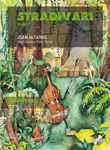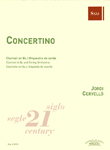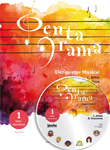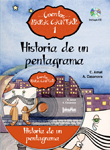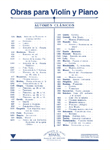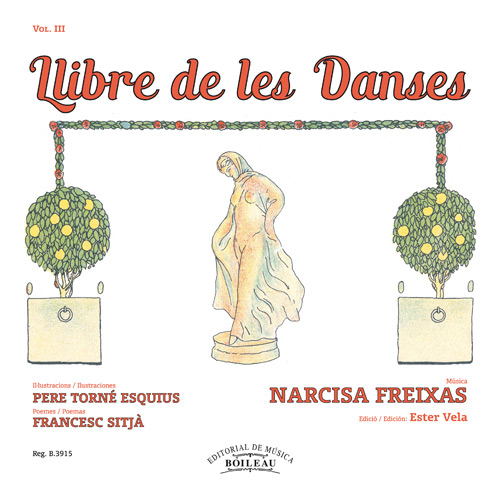Llibre de les danses, vol. 3
Piano
FREIXAS, NarcisaReg.: B.3915
21,00 €
P.V.P. (VAT included 4%)
Add to cart
- Review: VELA, Ester
- Ensemble: Solo.
- Genres: Classical / contemporary: Solos.
Musical education: Instrumental study repertoire.
- Lyric author: SITJÀ, Francesc
- Language: Catalán
- Language of the comment: Spanish, Catalan
- Product format: Partitura
- Difficulty level: Elementary-intemediate
- Period: 1st half S. XX
- Publishing house: Editorial Boileau
- Collection: Narcisa Freixas
- Illustrator: TORNÉ ESQUIUS, Pere
- No. of pages: 72
- Measure: 23,00 x 23,00 cm
- ISMN: 979-0-3503-3843-4
- Available in digital: No
- Available for rent: No
Although Narcisa Freixas's Book of the Dances was listed as "in print" in different publications since 1916; When the composer died, on December 20, 1926, the volume of Obra de Narcisa Freixas, Edició d'Homomenatge, was still unpublished and was published posthumously in 1928. This has been the reference for the present reissue, given that the original manuscripts are missing, according to the consulted sources and the affirmations of the only descendant of the composer, Mrs. Magda Petit i Codina, granddaughter of the composer. Each of the dances is accompanied, as well as in the editions of the two children's Piano books, drawings by Pere Torné-Esquius and poems by Francesc Sitjà, regular collaborators of the composer.
For the first of the dances, I was able to consult a copy of the manuscript of the theater play Rodamón [Trotamundos], which is deposited in the SGAE archive in Barcelona and published in the magazine Feminal n. 9, of December 29, 1907 (in both it makes use of an enharmonic tonality - B flat Greater instead of F sharp Greater).
The twelve dances that make up the book probably should be written at the beginning of s. XX. We know that Florissenda was a ballet that belonged to the work Rodamón, released in 1907. According to references of performances appeared in the press, he premiered several dances with the Popular Musical Culture institution, for example in the Teatro Principal de Barcelona, in a published review in the satirical magazine Cu-Cut! No. 422 of June 23, 1910 says: "Ladies playing, ladies singing and Narcisa Freixas letting a handful of dances ...".
Works of eminently Catalan folkloric character, framed within the nationalist fervor of the Renaixença and contemporary to the years of creation of the dance groups in Catalonia, the popular aroma that they give off is achieved by the composer making use of simple melodies, which makes singing to the right hand and some accompaniments that are often pedals and rhythmic obstinats that mark the step so that they can dance. The harmonies, as befits the popular character, are basic.
With a maximum respect for the source, only a few fingerings have been included and some indications of repetition that in the previous edition were incorrectly placed have been corrected.
Ester Candle
- Narcisa Freixas, una figura a recuperar
Partituras:
- Florisenda.
- La donzella del vestit de rams.
- L'estudiant.
- Els caminants.
- Elionor.
- La pagesa.
- El faune.
- La dama de França.
- La pastora.
- Les donzelles pobres.
- Francesca.
- Joana
Poemas en castellano
Notas a la edición

